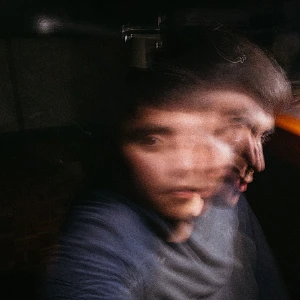Related Links
Transduction in Psychology - Transforming your knowledge
Updated on 21st January, 2023
Transduction Psychology Definition
In general terms, Transduction is transforming something from one state or form into another. While that may sound super vague, in psychology, it has several distinct meanings. So, what does Transduction mean in psychology?
One definition relates to our senses in a process known as Sensory Transduction. It involves the conversion of signals from our environment to neural signals that help our brains make sense of them.

What is Transduction Psychology?
Transduction in a psychological context may seem confusing, but don't worry. We're here to untangle it! Let's focus on Sensory Transduction first. We experience many sensations daily through touch, taste, smell, hearing, and seeing. But have you ever wondered how this takes place? Sensory Transduction, or Sensation Transduction, is a term used in psychology to explain the beginning of the process where our brain recognizes and understands what is happening in our environment. It's the first step in identifying the difference between warm and cool, light and dark, or quiet and noisy.
Sensory Transduction is a precursor to perception, which is our ability to interpret and recognize sensory information. During this type of Transduction, physical signals are produced from various forms of energy around us, such as sound waves or light. Our bodies are made up of thousands of sensory receptors which detect these physical signals and send electrical impulses to the central nervous system and brain, where they are processed.
Each sense, called a sensory system, has different receptors that detect various physical signals. Vision, for example, results from detecting light that reflects off objects and allows you to watch your favorite TV shows or admire a beautiful flower. On the other hand, hearing results from sound waves picked up by our inner ear, making our Spotify memberships worthwhile. As for the other senses, smell is triggered by molecules that carry scent, chemical substances within the saliva activate taste receptors, and changes in temperature or pressure on the skin lead to tactile sensations.

Now that we've untangled the first type of Transduction in psychology, we can move on to the second. Transductive Reasoning involves making a connection between two unrelated events based on observations made in your surroundings. Here, we mistake these two events as having a cause-and-effect relationship when this is not the case. This illogical thinking is typically seen in the Preoperational Stage (ages 2-7) of child development. In this stage, children start to develop logical thinking by attempting to understand and apply cause and effect to different situations and concepts.
Because the logical skills needed to understand how cause and effect relationships are not yet developed, Transductive Reasoning is expected during this stage. If you're wondering how to spot signs of Transductive Reasoning, here's an example to give you an idea. Let's say a child observes a bird always sitting on a tree outside their bedroom window in the morning. The child then thinks that morning results from a bird sitting outside their window. If for some reason, that bird is not outside one morning, the child would think it is still night. Here, the child has made an incorrect assumption of cause-and-effect between the bird and what time of day it is.

However, it's not just kids that can fall into Transductive Reasoning. Adults can also show Transductive Reasoning! Are you feeling superstitious? Whether it's avoiding walking under a ladder or panicking when you crack a mirror, nearly all of us have some superstition.
Superstitions are an example of Transductive Reasoning because they involve us presuming a cause-and-effect relationship between two things that are not logically related. If we think rationally, we realize that there is no evidence walking under a ladder will result in our misfortune. Yet, we still walk around them when we encounter one.
History of Transduction Psychology
To uncover the history of Transduction in its psychological context, it's helpful to examine the word's etymology. Transduction comes from the Latin word Transductionem, which originates from transducer/traducere, a verb that roughly translates to "to change over, convert" in today's English. The use of its Latin form can be traced back to the 17th century, when it was primarily used by scholars and academic papers. In the 20th century, the verb transduce was introduced to the English language, followed by Transduction.
As you can see, Transduction has its roots in a scientific context and is not only used in Psychology but also biology, genetics, machine learning, and physics. This is illustrated by the fact that the concept and study of Sensory Transduction can be traced back to as early as 1926, to a series of papers published by Professor Edgar Douglas Adrian (1889-1977), a British electrophysiologist who developed a sophisticated method of measuring electrical signals generated from the physical stimulation of nerve cells. Professor Adrian received a Nobel prize, alongside his colleague Sir Charles Sherrington (1857-1952), for his work.
The other use of the term Transduction in psychology, Transductive Reasoning, was coined by the Swiss psychologist Jean Piaget (1896-1980), whose influential work in studying child development is still used today and taught in universities worldwide. The term is used within Piaget's theory of child development to describe the type of thinking that occurs in one of its stages, the preoperational stage.
This stage marks the beginning of a transition towards symbolic thinking and intuition, often characterized by the rapid development of language. Children begin to think beyond their immediate environment and attempt to make connections between events around them. The term Transductive Reasoning comes from the fact that this type of Reasoning is neither inductive, a kind of Reasoning that uses specific cases to form general rules, nor deductive, which takes general rules and applies them to one particular case.

Case Examples of Transduction Psychology
Case 1: What lets you know that you poured too much hot sauce on those chicken wings? The tongue is made up of many small bumps called 'papillae.' These papillae are where our taste buds can be found. Taste buds contain receptor cells and are connected to gustatory hairs, also known as 'taste hairs' that come into contact with chemical substances in saliva. This leads to a neural signal being sent to a brain region responsible for perceiving and processing the sensation of taste. What makes spicy foods interesting, however, is the burning sensation they can cause. This is because of a chemical compound found in spicy foods called capsaicinoids. These capsaicinoids do not trigger our taste receptors but instead activate thermoreceptors, which detect heat, and pain receptors, known as nociceptors.
Essentially, spicy flavors trick our brains into thinking we have eaten something harmful. These heat and pain receptors are found all over the body, which is why you should never get hot sauce in your eye! So, why does this happen? One prominent theory is that plant species evolved to contain capsaicin to discourage mammals from eating and destroying them while still allowing pollinators, such as birds or insects that do not have the same physiological reaction, to continue eating them.

Case 2: Ever remember that saying 'step on a crack, break your mother's back," and carefully avoiding all the cracks in the sidewalk for weeks after you heard it? That's an example of Transductive Reasoning. As you grew up, you probably realized the chances of stepping on a crack and your mother's back-breaking were likely to be extremely low. But before that, you were making a connection between one event, stepping on the crack, and another future event, which would be your mother's back-breaking. It may seem silly now due to how illogical it is, but sayings like these illustrate how young children exhibit Transductive Reasoning.

Case 3: Is your email inbox cluttered with thousands of unread emails? There's no doubt the majority of them will be spam or annoying promotions that keep coming despite you hitting unsubscribe. But the most annoying is the chain email forwarded from a worried grandparent or over-anxious friend. Transductive Reasoning is first found in the chain emails' superstitious nature. These emails usually describe some positive or negative consequence of forwarding the email to everyone in your contact list. Logically, simply forwarding an email will not cause you to suddenly receive lots of money or have a deranged killer break into your house.
So why do people send them? Aside from the anxiety or hope these emails can foster, sending these emails results from buying into this Transductive Reasoning. The sender believes that whatever the email promises will happen by forwarding this email, despite this being near impossible. Never check your email? You can also find this on social media through chain messages or posts.
A Beautiful Quote
- Louis C.K.